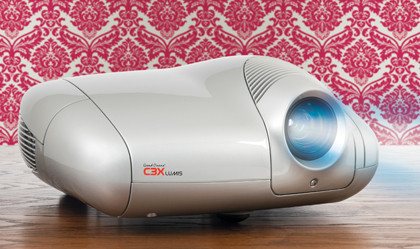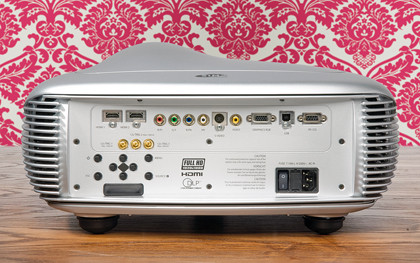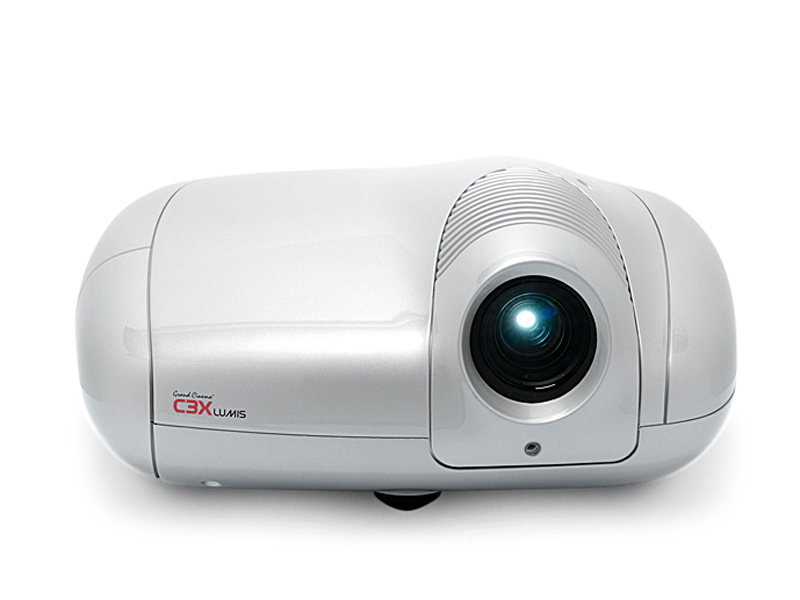TechRadar Verdict
A great option if you are looking to get into the world of high-end projection but not as good as the 'true' premium models from SIM2
Pros
- +
Truly premium picture quality
- +
Exceptional colour management
- +
Gorgeously designed
Cons
- -
Lacks any dynamic or manual iris controls and so loses out a touch on shadow detail to higher-level Lumis models
- -
Runs a little noisily
Why you can trust TechRadar
There aren't many corners of the AV world where a price tag of £19,000 might be considered 'cheap'. But one such place is the high-end front projection market, occupied by such rarified brands as Runco, Projectiondesign, and Sim2.
So it is that we find ourselves genuinely surprised to find Sim2 coming out of left-field to offer a new model in its C3X Lumis DLP series for a price south of £20,000. After all, the previous most affordable model, the core C3X Lumis, costs nearly £26K.
So with the C3X Lumis Uno, you could save seven grand and blow it on a nifty runaround for the missus instead. Or the holiday of a lifetime to the Maldives Hilton.
Alternatively, hopes Sim2, by breaking the key 20 grand barrier, the C3X Lumis Uno might tempt a few more people who may have balked at the £26,000 asking price of the main C3X Lumis.
Plus, bringing in a much cheaper C3X Lumis gives custom installers more flexibility when trying to hit the budgets they've been given by their client.
All of which only really matters, of course, if the C3X Lumis Uno is actually any good. So let's start by finding out just how Sim2 has been able to shave £7,000 off the price of the main C3X Lumis model to get here.
At first glance, the list of 'cutbacks' looks impressively short. For all that's really substantively different is that the C3X Lumis Uno lacks the dynamic and manual iris adjustments of its costlier sibling. However, when you stop to think about this a little more, this is potentially quite a severe downgrade for such an illustrious projector series.
Sign up for breaking news, reviews, opinion, top tech deals, and more.
For starters, not having the dynamic iris function puts a big dampener on the C3X Lumis Uno's contrast ratio claims. For while the original C3X Lumis promises a huge (for DLP technology) 35,000:1 contrast ratio, the Uno claims 'just' 9,000:1. Ouch.
Inflexible friend
Arguably more important, though, given the vagaries of contrast ratio measurements, is the relative lack of flexibility for installers created by the removal of manual iris adjustment. Being able to physically alter the amount of light emitted through the projector's lens gives installers all kinds of extra options when it comes to, say, picking a matching screen, or working out how to control light scatter.

Plus, on a more basic level, it provides an installer with a potentially key extra component in fine-tuning the projector's pictures. Whatever doubts I might have about how the lack of iris adjustments might damage the Uno's appeal to its target market, one thing not in doubt is that the Uno is a feast for the eyes.
It sports the same stunningly curvaceous shape, surprisingly compact footprint and gorgeously high-gloss finish as the main C3X Lumis – a projector which, for me, is the single prettiest model in the front projection world right now. It's still got oodles of high-end tech under its hood, too, despite the missing iris adjustments.
At its heart, for instance, are three DarkChip 4 DLP chipsets, driven by a 260W lamp able to pump out an extreme 2600 ANSI Lumens of brightness. That's only 400 short of the output quoted for the main C3X Lumis.
What's more, the Uno can have its colours tuned to within a millimetre of their lives courtesy of the incredibly sophisticated PC-based 'LiveColour' colour calibration software we raved about in our earlier review of Sim2's Grand Cinema C3X 1080.
Also potentially very significant is that you can adjust the output of the lamp to a series of different wattages. This feature is also found on the core C3X Lumis, but it's great that it's been retained for the Uno, since it means installers do after all have some degree of flexibility with the amount of light being 'cannoned' out of the Uno's lens.
Other key points that help make the Uno every inch a premium projector include 10bit video processing, its use of a new, patented Die-Cast compact light engine using Sim2's own ALPHAPATH technology, and the fact that you can have it with any of three different lens options: the short throw 1.37-1.66:1 T1, the 1.82-2.48:1 T2, and the 2.6-3.9:1 T3.
Where the Uno really makes its price count, though, is where it matters most: its performance.
Strike one!
The first thing that strikes you as you watch it is how intensely bright its pictures are. They explode off my reference screen – even using the lowest lamp output setting – with the sort of dynamism and intensity you just don't get with 'mainstream' PJs.
This leaves me in no doubt whatsoever that the Uno is capable of driving much larger screens than my 100in effort, and in larger rooms. The extreme brightness of the image has other knock-on benefits too.
Not least is the exceptional dynamism of the projector's colour response, which finds colours looking both sumptuously vibrant but also exceptionally natural. In fact, the insight the Uno gives you into subtle blends and tonal shades is almost shocking when considered alongside even a very respectable mainstream (£3K or so) projector.
I'd expected the Uno to lose something compared with Sim2's top-end projectors with shadow detail due to its iris limitations. But while this does happen, the amount of subtle greyscale and colour information the Uno manages to retrieve during dark sequences is still prodigious, and adds further to that sense of insight I mentioned earlier.

As does the projector's pixel perfect fine detail presentation, which is so accurate that it reveals absolutely without mercy the good and bad things about any high-definition film or game. The fact that it can pick out a few image problems lesser projectors can't isn't the Uno's fault, of course. I merely point it out to stress how much more crisp and accurate its pictures are than you see with normal, 'value' projectors.
For anyone who's never seen a premium projector in action, the experience of watching the Uno can be akin to seeing your favourite Blu-rays again for the very first time. Let's not forget, either, that the Uno's three-chip DLP technology means it doesn't suffer like cheap, single-chip DLP projectors with the 'rainbow effect', or motion noise.
Perhaps inevitably for such a powerful yet compact projector, the Uno runs a little more noisily than we'd like. Otherwise, the only real question I can raise about the Uno is a philosophical one.
If you can afford £19K for a projector as good as this, can't you afford an extra £7K for the even more flexible and talented C3X Lumis? But as noted earlier, £7,000 can go a long way for anyone...
Follow TechRadar Reviews on Twitter: http://twitter.com/techradarreview

John has been writing about home entertainment technology for more than two decades - an especially impressive feat considering he still claims to only be 35 years old (yeah, right). In that time he’s reviewed hundreds if not thousands of TVs, projectors and speakers, and spent frankly far too long sitting by himself in a dark room.
